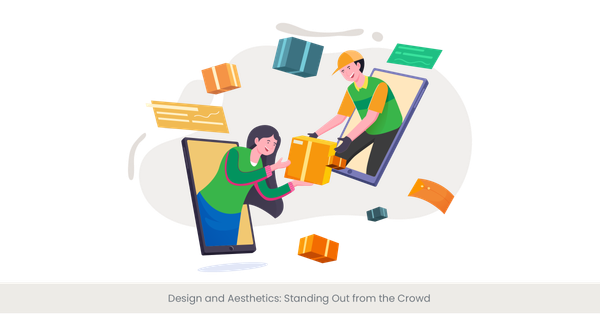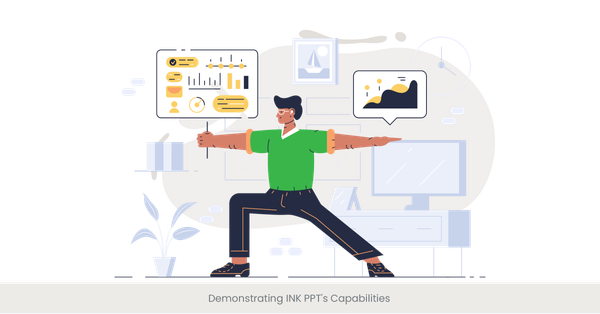
Creating a compelling pitch deck is crucial for any startup looking to secure funding. A well-crafted pitch deck presentation can capture investor attention and convey key business information concisely, significantly influencing funding opportunities. It should include essential elements such as your business model, market analysis, and financial projections.
Creating a compelling pitch deck is crucial for any startup looking to secure funding. A well-crafted pitch deck presentation can capture investor attention and convey key business information concisely, significantly influencing funding opportunities. It should include essential elements such as your business model, market analysis, and financial projections.
Understanding Pitch Decks
A pitch deck is a crucial tool for entrepreneurs, startups, and businesses to showcase their ideas, products, or services to potential investors, partners, or customers. It’s a visual representation of a business plan, condensed into a concise and engaging presentation.
What is a Pitch Deck?
A pitch deck is a 10-20 slide presentation designed to help founders raise venture capital, secure funding, or gain traction for their business. It’s a brief and compelling presentation of a new business idea, highlighting the entrepreneur’s vision, unique value proposition, and growth potential. A great pitch deck should cover key points such as:
- The Problem: Clearly define the problem your startup is addressing.
- Market Opportunity: Highlight the size and potential of the market.
- Solution: Present your product or service as the solution to the problem.
- Business Model: Explain how your business will make money.
- Go-to-Market Strategy: Outline your plan for reaching customers and scaling.
- Competitive Analysis: Show how you stand out from competitors.
- Team: Introduce the team and their expertise.
- Financial Projections: Provide an overview of your financial forecasts.
- Traction: Share any milestones or achievements to date.
- Ask: Clearly state what you are seeking from investors.
A successful pitch can lead to funding, partnerships, and growth opportunities. Crafting a pitch deck requires in-depth knowledge of the market, audience, and business model, as well as excellent communication and storytelling skills.
Review of Top Software Tools for Creating Pitch Decks
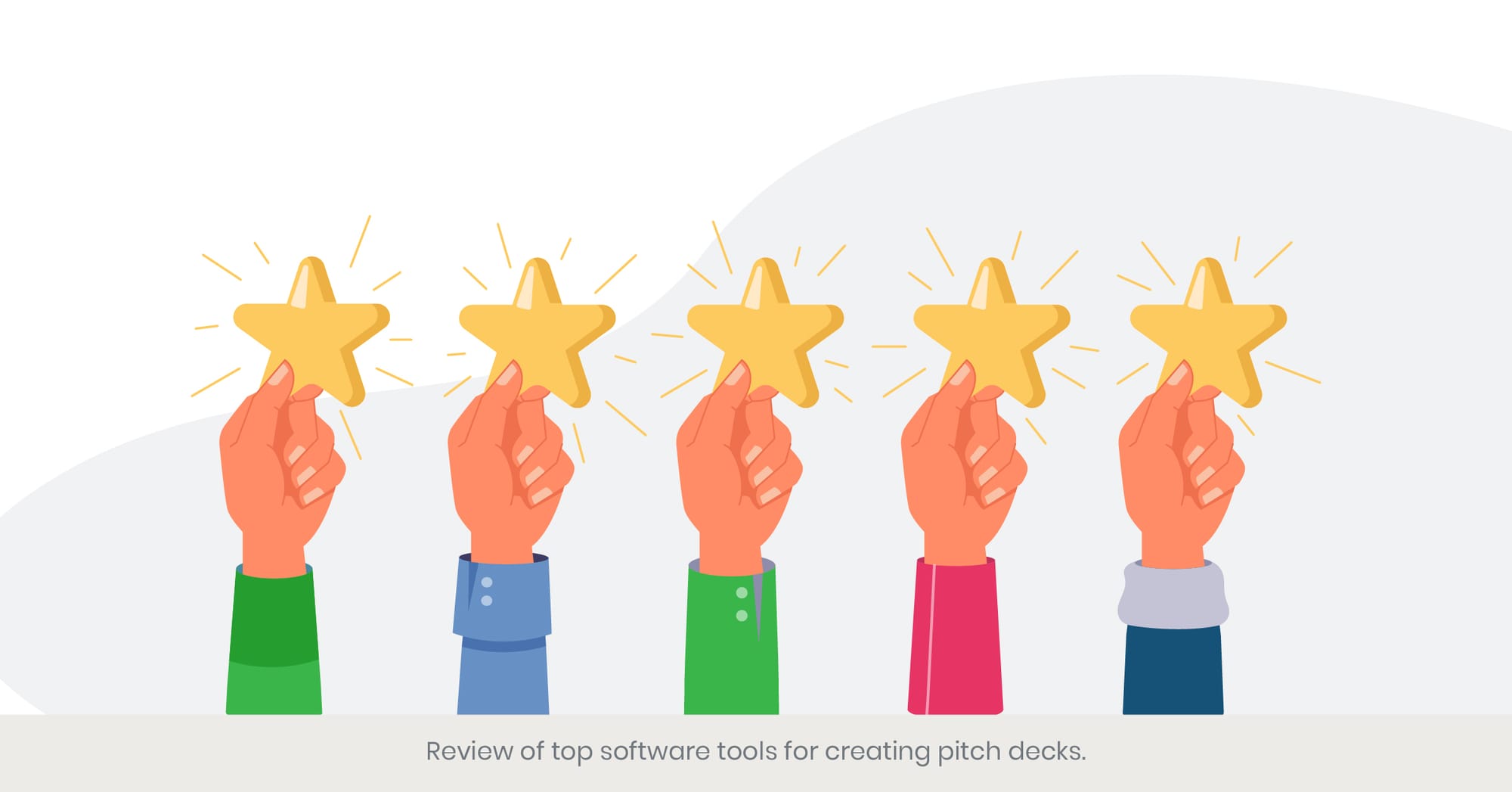
Introduction: Enhancing Presentation with Advanced Tools
The evolution of digital tools has significantly transformed the art of creating pitch decks. A well-prepared slide deck can greatly impact the effectiveness of pitching at events like demo days or in meetings with investors by summarizing key points in a visually compelling manner. Today, a variety of software tools offer features that not only simplify the design process but also enhance the final product with rich, engaging elements. This overview explores the top software tools currently available for designing compelling pitch decks.
Background: The Rise of Pitch Deck Software
Over the past decade, the proliferation of specialized software tools has made it easier for entrepreneurs to create professional-quality presentations without extensive design experience. These tools range from comprehensive platforms offering a plethora of customizable templates to more niche solutions that provide unique visual and interactive elements. The key is to choose software that aligns with the specific needs and goals of the presentation.
Real-World Applications: Success Stories
Popular platforms like PowerPoint and Google Slides are staples in the industry, known for their versatility and ease of use. A startup pitch deck template can be an essential tool for entrepreneurs seeking funding or partnerships, providing a structured format that includes critical elements like business models and target audience analysis. However, newer entrants like Canva and Prezi offer innovative features such as dynamic templates and interactive design capabilities that can make a pitch deck stand out. For example, a startup might use Canva’s vast library of graphic elements to create a visually stunning pitch deck that effectively communicates its business model and market opportunity.
How to Customize Templates to Fit Unique Business Narratives
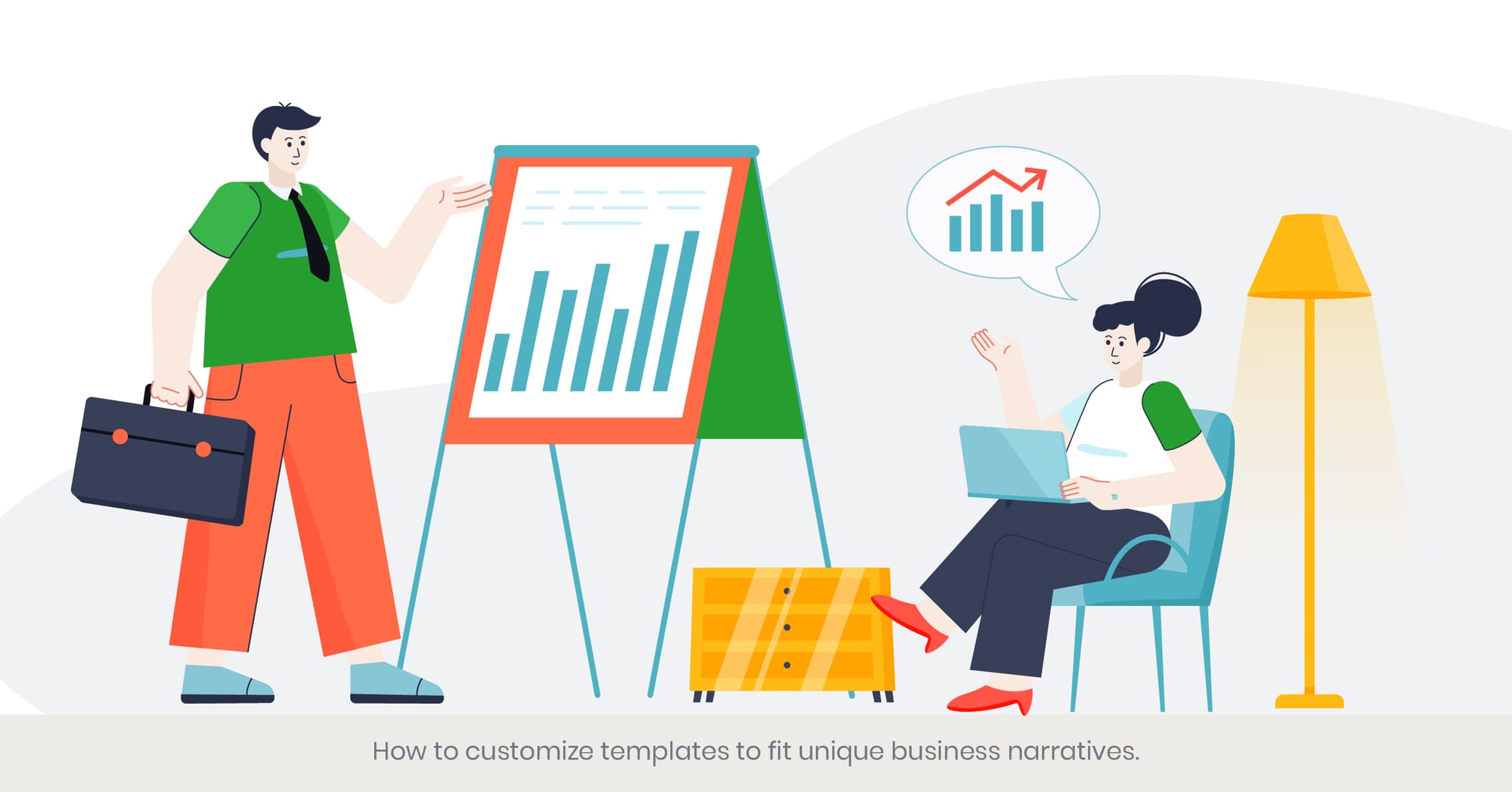
Introduction: Tailoring Templates to Tell Your Story
Using templates is a common starting point for creating pitch decks, but the key to making an impact is customization. Tailoring pitch deck presentation templates to fit a unique business narrative allows entrepreneurs to convey their specific vision and needs effectively. This section delves into the strategies for customizing templates to enhance their relevance and engagement potential.
Background: The Benefits of Template Customization
Templates provide a foundational structure and design, which can be a significant time-saver. However, customization is essential to ensure that the pitch deck reflects the unique brand identity and storytelling needs of the business. Customizing templates involves modifying colors, fonts, layout, and incorporating specific imagery that aligns with the business's ethos and objectives.
Real-World Applications: Customization in Action
Consider the case of a tech startup that used a standard pitch deck template but customized it to highlight its innovative technology through unique infographics and customized data visualizations. This not only set the startup apart from its competitors but also helped potential investors quickly grasp the uniqueness and value proposition of the product.
Benefits of Using Pre-Designed Templates for Efficiency

Introduction: Streamlining Design with Pre-Designed Templates
In the fast-paced world of startups and business pitches, efficiency is key. A free pitch deck template provides a customizable and professional solution for creating engaging presentations, making it easier to personalize designs, collaborate with others, and utilize various multimedia tools. Pre-designed templates offer a way to quickly create professional and visually appealing pitch decks without starting from scratch. This section explores the advantages of using these templates to streamline the design process and save valuable time.
Background: The Efficiency of Pre-Designed Templates
Pre-designed templates are crafted by professional designers and cater to a variety of business needs and styles. These templates come equipped with a structured layout, styled text formats, and often industry-specific graphics. By reducing the need for extensive design work, these templates allow entrepreneurs to focus more on refining their business message and less on the technicalities of design.
Real-World Applications: Templates in Effective Pitch Decks
Many successful pitches have leveraged pre-designed templates to great effect. For example, a fintech startup might use a financial-themed template that comes pre-loaded with charts and graphs suitable for financial data, enabling them to quickly populate the template with their data. This not only speeds up the preparation process but also ensures that the presentation is polished and professional.
When to Choose Bespoke Designs Over Templates
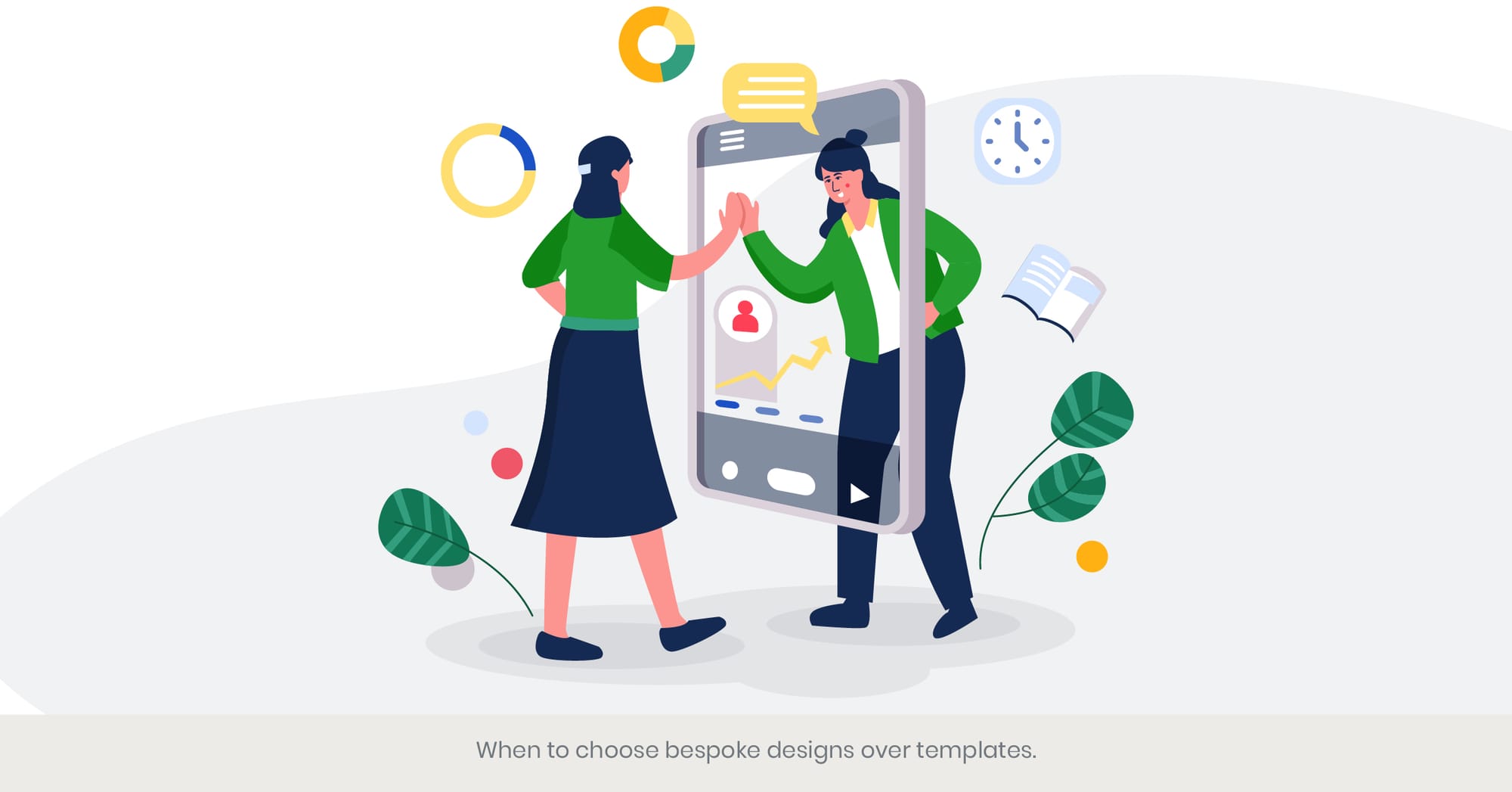
Introduction: Embracing Customization for Distinctive Impact
While templates offer efficiency and ease, there are scenarios where a bespoke, or custom-made, design is more appropriate to achieve a distinctive impact. This section examines the circumstances under which investing in bespoke designs can significantly enhance a pitch deck's effectiveness and alignment with specific business goals.
Background: The Case for Bespoke Design
Bespoke designs are fully tailored to a company’s branding, message, and audience, offering a level of uniqueness and specificity that pre-designed templates cannot match. These custom designs are particularly valuable when the business model or product is novel or complex, requiring a unique presentation style to convey the concept clearly and compellingly.
Real-World Applications: Success Stories of Bespoke Designs
Examples of bespoke designs abound in industries where innovation and brand identity are crucial. For instance, a luxury brand may opt for a custom-designed pitch deck that reflects its high-end aesthetic, using unique fonts, colors, and imagery that resonate with its market positioning. Such customization not only captivate potential investors but also reinforce the brand’s premium image.
Tools for Collaborative Pitch Deck Creation
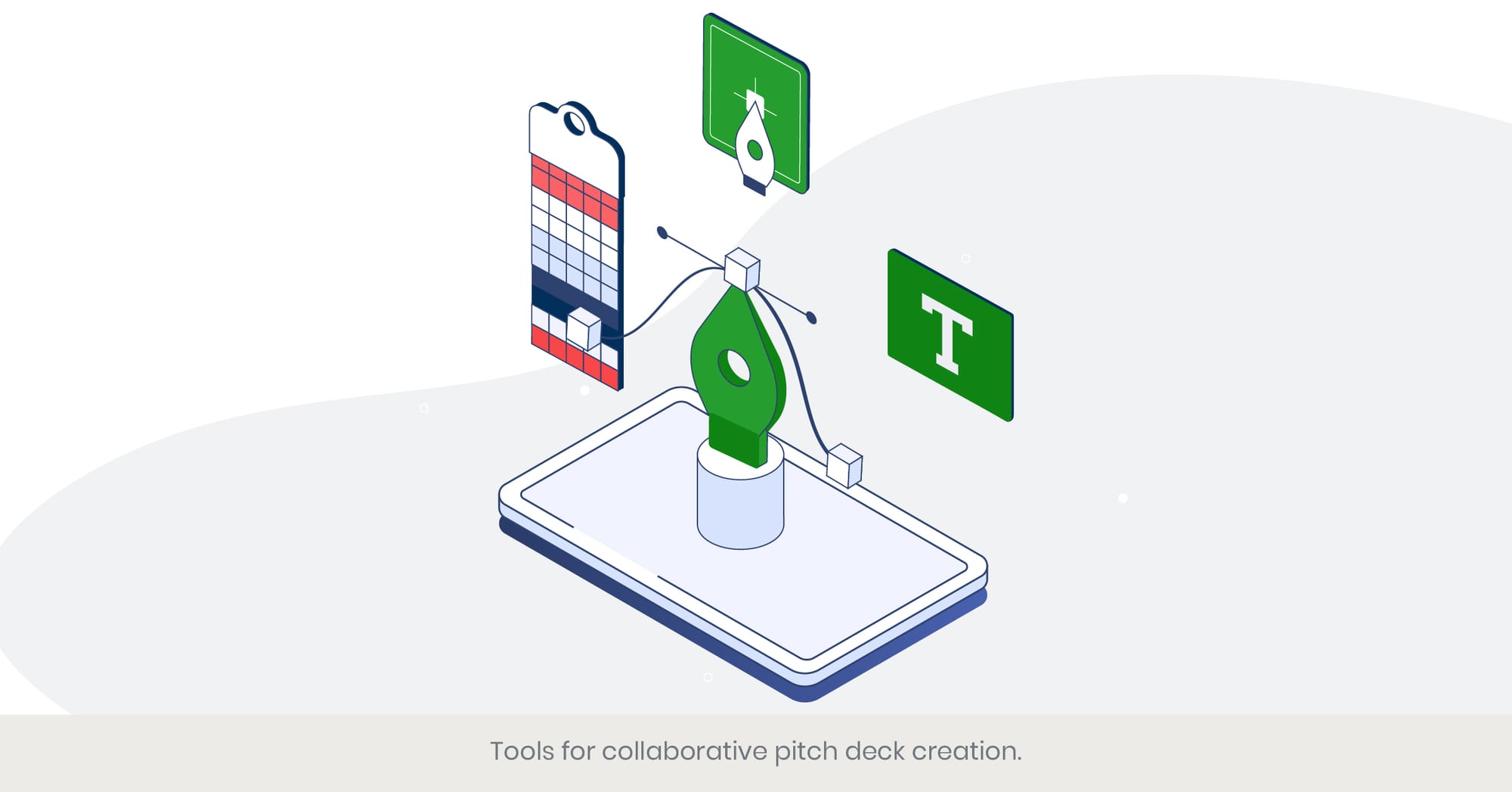
Introduction: Facilitating Team Collaboration in Design
In today's interconnected world, the ability to collaborate effectively on projects, including pitch deck creation, is invaluable. Collaborative tools enable teams to work together seamlessly, regardless of their physical locations. This section explores various tools that enhance collaboration during the pitch deck design process.
Background: The Importance of Collaborative Tools
Collaborative tools are designed to streamline communication and project management among team members. These platforms often feature capabilities such as real-time editing, version control, and integrated chat functions, which are essential for maintaining consistency and ensuring all team members are on the same page throughout the design process.
Real-World Applications: Collaborative Tools in Action
Successful implementations of collaborative tools can be seen in environments where team input and agility are critical. For instance, companies like Google have developed tools like Google Slideshow, which allow multiple users to edit presentations simultaneously. This feature has proven particularly beneficial for startups, where rapid iteration and feedback are crucial to the development of the final pitch deck.
Integrating Interactive Elements into Pitch Decks
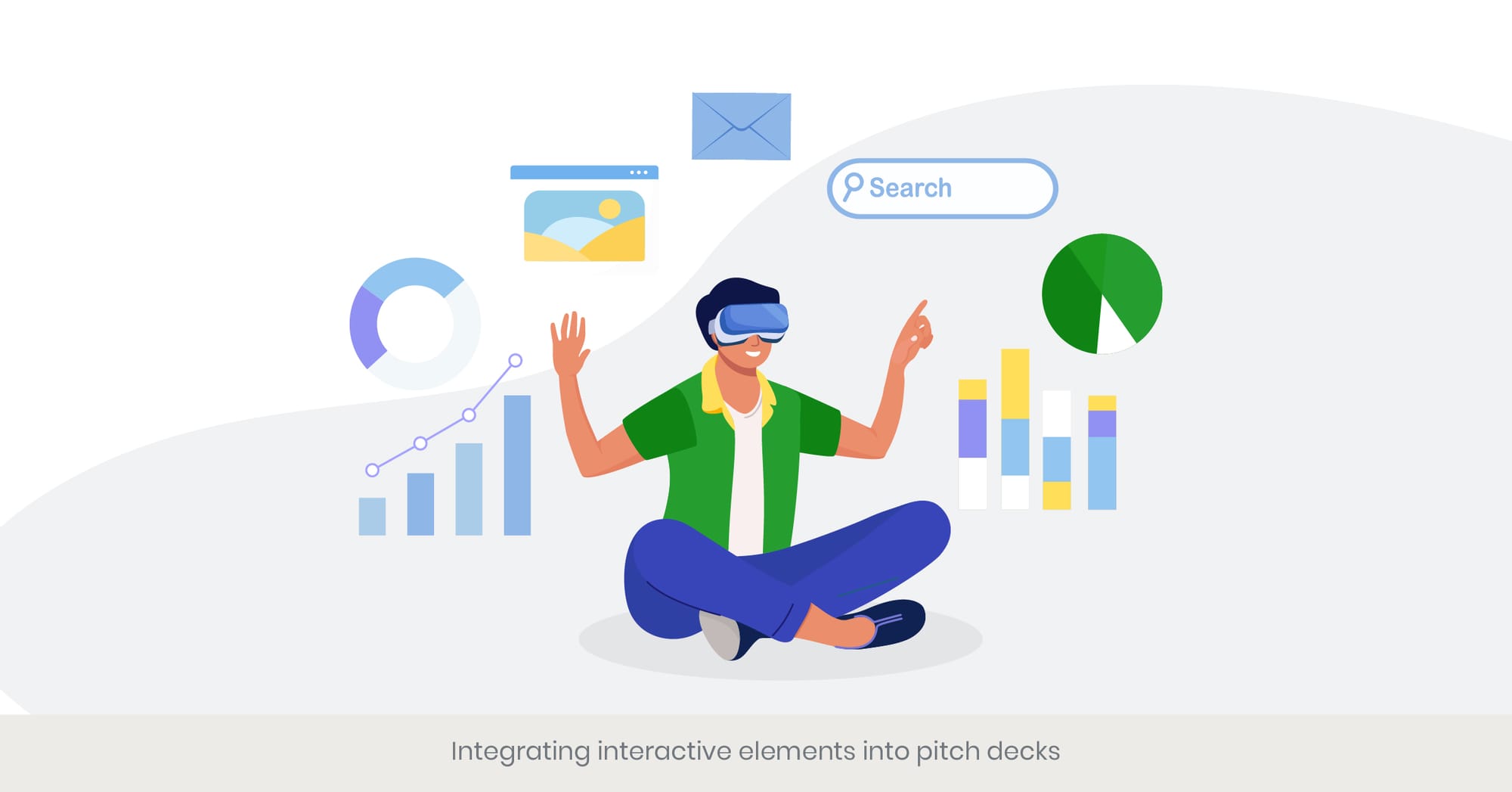
Introduction: Enhancing Engagement with Interactivity in Pitch Deck Presentation
Interactive elements in pitch decks can transform a static presentation into a dynamic, engaging experience for the audience. This section explores the types of interactive elements that can be incorporated into pitch decks and their benefits in capturing and maintaining audience attention.
Background: The Role of Interactivity in Presentations
Interactivity in presentations can include embedded videos, clickable links, animation sequences, and even live data feeds. These elements make presentations more engaging and can significantly enhance the comprehension of complex information by allowing the audience to explore content at their own pace or focus on particular areas of interest.
Real-01World Applications: Interactivity at Work
For instance, a technology company might include a live demo of their product as part of the pitch deck, allowing potential investors to interact directly with the software. Another example is a market research firm embedding interactive charts and graphs that viewers can manipulate to see different data visualizations, providing a deeper understanding of market trends and behaviors.
Security Considerations When Using Online Design Tools
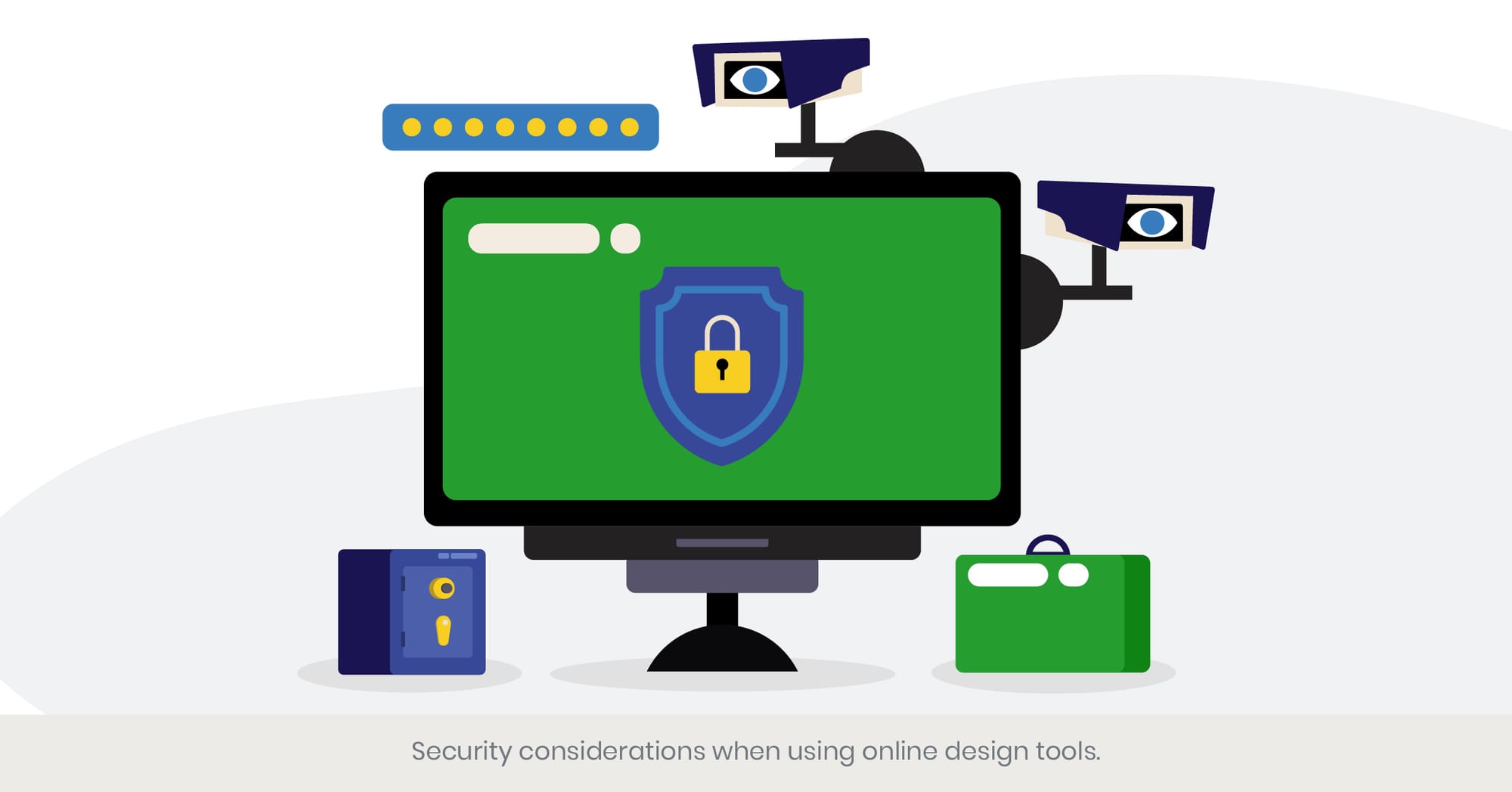
Introduction: Safeguarding Digital Assets in Design
In the digital age, using online tools for creating pitch decks introduces various security considerations that must be addressed to protect sensitive information. This section explores the security risks associated with online design tools and best practices for ensuring data protection.
Background: The Importance of Security in Online Tools
As pitch decks often contain confidential business plans, financial data, and strategic insights, the security of the tools used to create and share these documents is paramount. Online design tools can be vulnerable to data breaches, unauthorized access, and other cyber threats, making it crucial for users to understand and mitigate these risks.
Real-World Applications: Addressing Security Challenges
Companies often implement robust security measures when using online tools for sensitive materials. For example, a startup may choose a design platform that offers end-to-end encryption and secure sharing options to protect its pitch deck from being accessed by unauthorized parties. Additionally, ensuring that all team members are trained in basic cybersecurity practices can further safeguard the company's digital assets.
Cost-Effective Tools for Startups and Small Businesses: Startup Pitch Deck Template
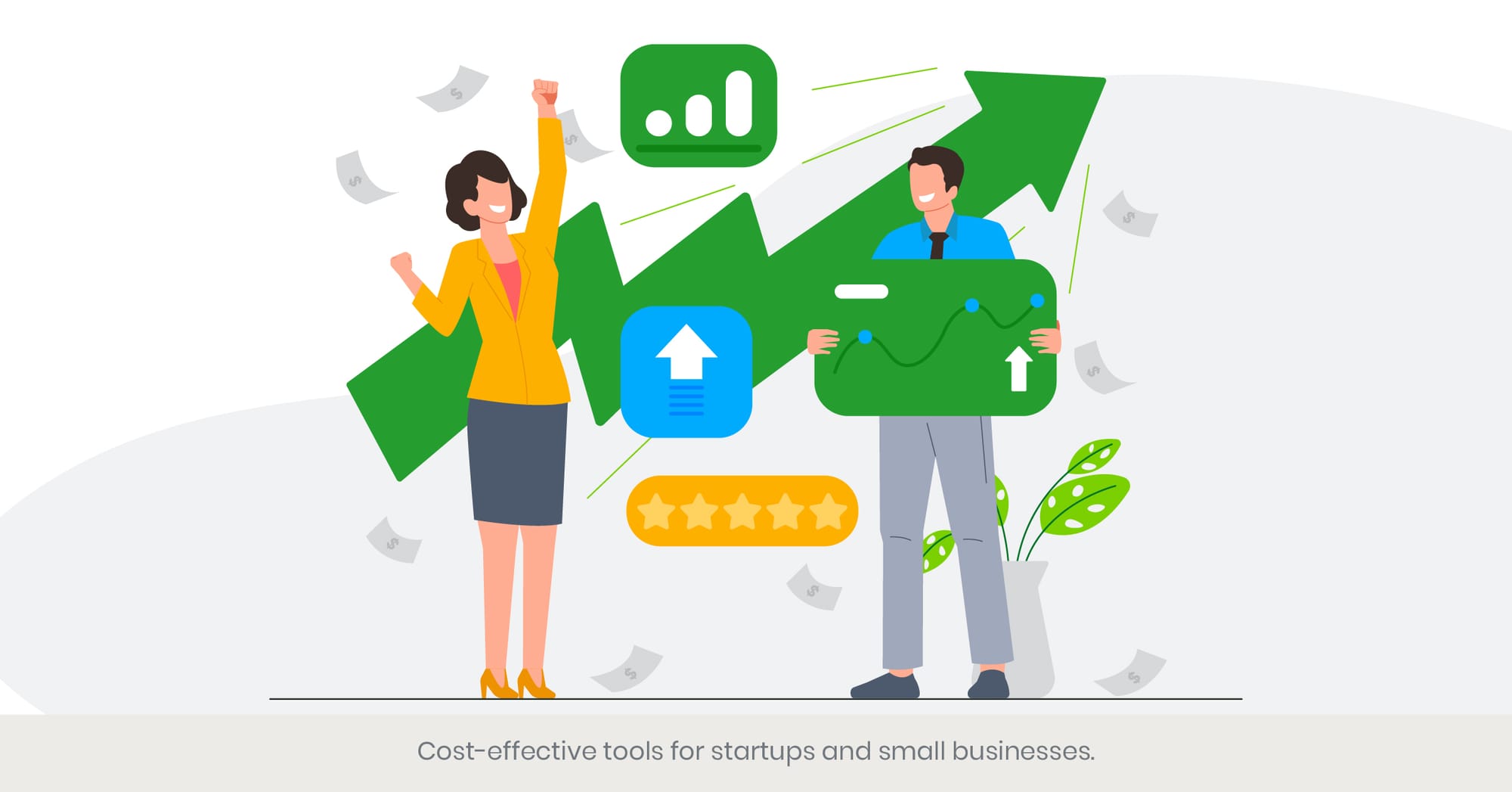
Introduction: Maximizing Resources with Affordable Tools
For startups and small businesses, budget constraints are a common challenge. Finding cost-effective tools for creating pitch decks can play a crucial role in resource management while still allowing for high-quality presentations. This section examines affordable design tools that do not compromise on functionality and effectiveness.
Background: The Value of Affordable Design Tools
Access to affordable design tools enables startups and small businesses to create professional-looking pitch decks without the need for a large upfront investment in expensive software or professional designers. These tools often provide a wide range of templates, customizable elements, and user-friendly interfaces that cater to non-designers.
Real-World Applications: Leveraging Budget-Friendly Tools
Many successful startups have utilized cost-effective tools to produce their initial pitch decks, which have helped them secure funding and grow their businesses. For instance, platforms like Canva and Google Slides offer free or low-cost options that include extensive libraries of templates and design elements suitable for various industries and presentation styles.
Resources for Finding Industry-Specific Pitch Deck Templates
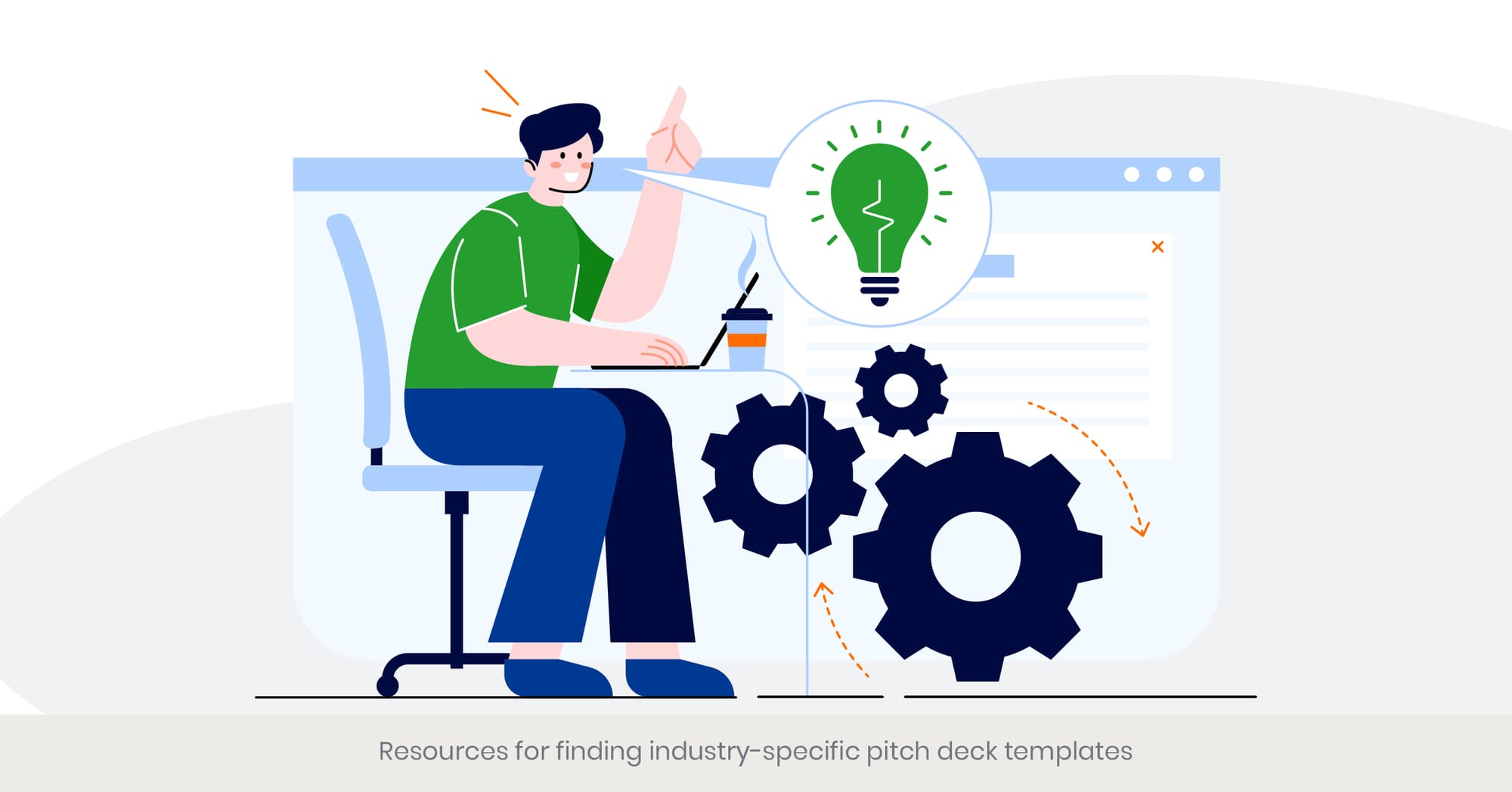
Introduction: Tailored Templates for Every Sector
Industry-specific pitch deck templates are invaluable for businesses looking to communicate their value proposition clearly and effectively. These templates are designed with the specific needs and nuances of different industries in mind, providing a strong starting point for creating a customized presentation. This section will explore resources where businesses can find these tailored templates.
Background: The Importance of Industry Relevance
Using a template that aligns with industry standards and expectations can greatly enhance the effectiveness of a pitch deck. It ensures that the presentation speaks directly to the target audience, including potential investors who are familiar with the industry. This can help in highlighting the business’s strengths and opportunities within the market context more effectively.
Real-World Applications: Effective Use of Specific Templates
For example, a biotech startup would benefit from using templates that include elements suitable for scientific data presentation, such as complex graphs and charts, which are crucial for demonstrating research findings and technological efficacy. Similarly, a retail business might choose templates that showcase product lines and market demographics, using a more visual and consumer-friendly layout.
Tips for Maintaining Brand Consistency Across Various Tools and Templates
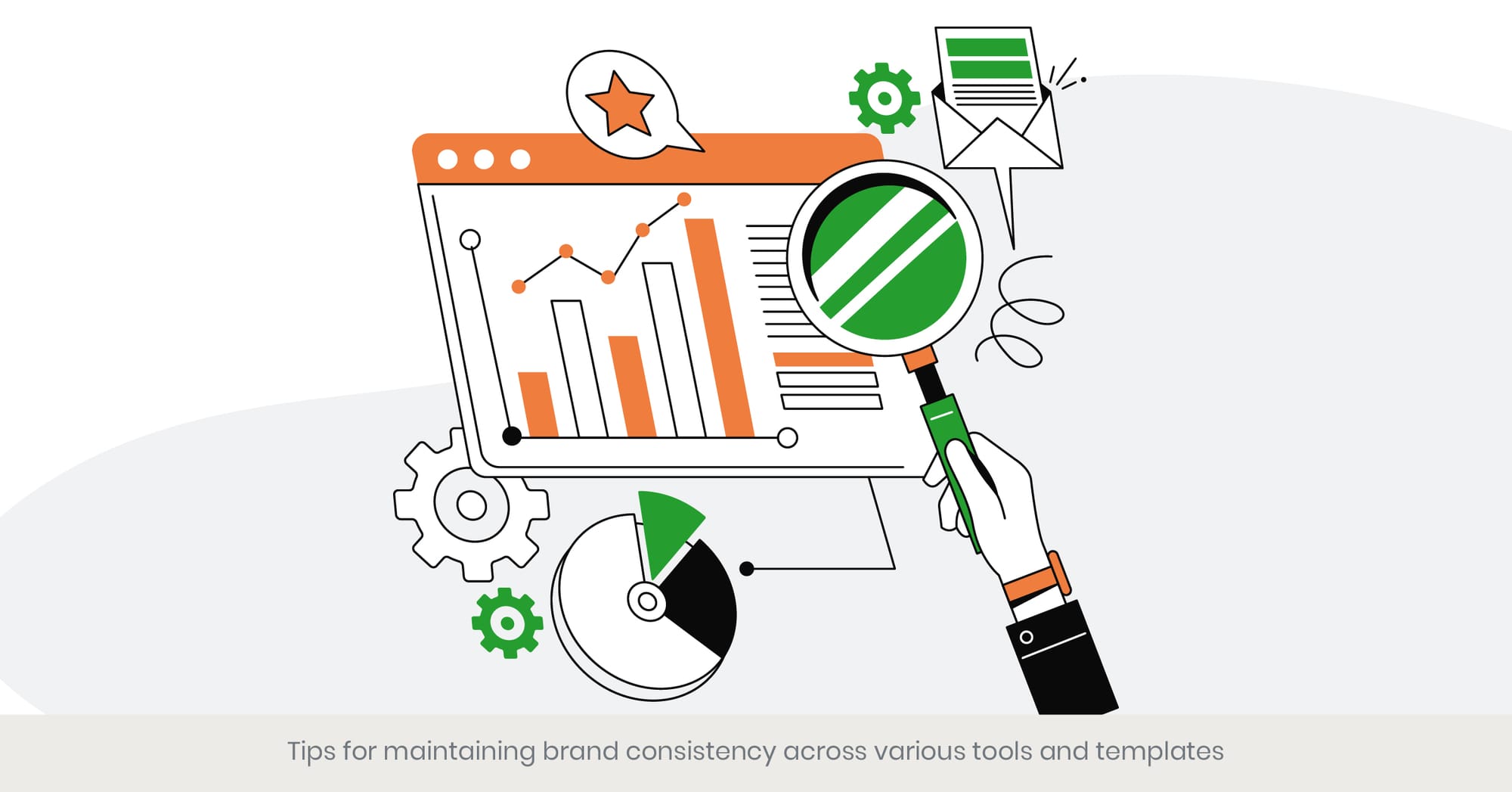
Introduction: Ensuring Cohesive Brand Presentation
Maintaining brand consistency across various design tools and templates is crucial for establishing a strong, recognizable brand identity. This section offers practical tips for ensuring that every element of your pitch deck—from color schemes to typography—aligns with your brand's standards, regardless of the tools or templates used.
Background: The Significance of Brand Consistency
Brand consistency helps in building trust and credibility with your audience. It ensures that all marketing materials, including pitch decks, convey a unified message and aesthetic that resonates with your target audience. Consistency across all platforms and presentations also reinforces your brand's identity, making your business more memorable and professional.
Real-World Applications: Consistency in Action
A classic example is Apple, known for its distinctive and consistent branding across all its products and marketing materials. Even in their pitch decks, they adhere strictly to a specific set of fonts, colors, and imagery that reflect their minimalist, user-friendly philosophy. This consistent branding helps strengthen their market position and promotes customer loyalty.
Choosing the Right Pitch Deck Template
With numerous pitch deck templates available online, choosing the right one can be overwhelming. A good pitch deck template should be customizable, visually appealing, and easy to use.
Features of a Good Pitch Deck Template
A good pitch deck template should have the following features:
- Customizable Design Elements: Ability to modify colors, fonts, and graphics to match your brand.
- Pre-Designed Slides: Templates for common sections such as business model, go-to-market strategy, and company metrics.
- User-Friendly Interface: Easy to navigate and use, allowing you to focus on content rather than design.
- Compatibility: Works with popular presentation software like PowerPoint, Google Slides, and Keynote.
- Resource Library: Access to a variety of images, icons, and graphics to enhance your presentation.
Popular Pitch Deck Templates
Some popular pitch deck templates include:
- Startup Pitch Deck Templates: Designed specifically for entrepreneurs and startups, these templates often include slides for problem, solution, market opportunity, and financials.
- Business Plan Templates: Ideal for companies looking to create a comprehensive business plan, these templates cover all aspects of the business.
- Pitch Deck PowerPoint Templates: Compatible with Microsoft PowerPoint, these templates are perfect for users who prefer this software.
- Free Pitch Deck Templates: Available for download from websites such as Canva, SlideModel, and SlideGenius, these templates offer a cost-effective solution.
- Customizable Templates: Allow users to tailor the design to their company branding, ensuring a unique and professional look.
When choosing a pitch deck template, consider the purpose of the presentation, the audience, and the desired outcome. A great pitch deck template should help you create a compelling and effective presentation that showcases your business ideas and helps you achieve your goals.
Frequently Asked Questions
1. What are the advantages of using pitch deck templates?
Using pitch deck templates can save time and ensure consistency in design. They provide a professional structure that can be easily customized to fit different business narratives, helping entrepreneurs focus on their content rather than design details.
2. How can I customize a pitch deck template to fit my business?
Customize a pitch deck template by adjusting the color scheme to match your brand, choosing appropriate fonts, and replacing placeholder texts and images with your own content. Focus on aligning the design elements with your business identity and goals to make the template uniquely yours.
3. Are there cost-effective tools available for creating pitch decks?
Yes, there are several cost-effective tools available for creating pitch decks, such as Canva, Google Slides, and Microsoft PowerPoint. These platforms offer free or affordable plans that include a variety of templates and design elements suitable for startups and small businesses.
4. When should I consider a bespoke design for my pitch deck?
Consider a bespoke design when your business requires a unique presentation that stands out in a competitive market or when generic templates do not adequately address your needs. Custom designs can more effectively convey complex information and unique business propositions.
5. What should I look for in a pitch deck tool regarding collaboration?
Look for features such as real-time collaboration, comment and feedback options, version control, and integration with other tools. These features facilitate seamless teamwork and ensure that all contributors can work together efficiently, regardless of their location.
6. How can I ensure security when using online pitch deck tools?
Ensure security by choosing tools that offer strong data encryption, secure cloud storage, user authentication, and permission settings. Regularly update your software and educate your team about basic security practices to protect your data.
7. What are the benefits of integrating interactive elements into a pitch deck?
Integrating interactive elements like videos, hyperlinks, and animations can make your pitch deck more engaging and memorable. These elements help illustrate points more dynamically and can keep the audience engaged throughout the presentation.
8. How can I maintain brand consistency across various pitch deck templates?
Maintain brand consistency by using a defined color palette, consistent logo placement, uniform fonts, and similar styling across all templates. Create a brand guideline that can be easily applied to any template to ensure that all presentations reflect your brand identity.
9. Where can I find industry-specific pitch deck templates?
Industry-specific pitch to deck templates can be found on various online platforms such as Slidebean, Visme, and Template Monster. These sites offer templates tailored to different industries, which can be a great starting point for creating a relevant and effective pitch deck.
10. What are some tips for presenting a pitch deck effectively?
Practice your presentation multiple times to ensure smooth delivery. Tailor your pitch to the audience's interests and background, keep slides concise and focused, use high-quality visuals to support your points, and prepare to answer questions confidently.

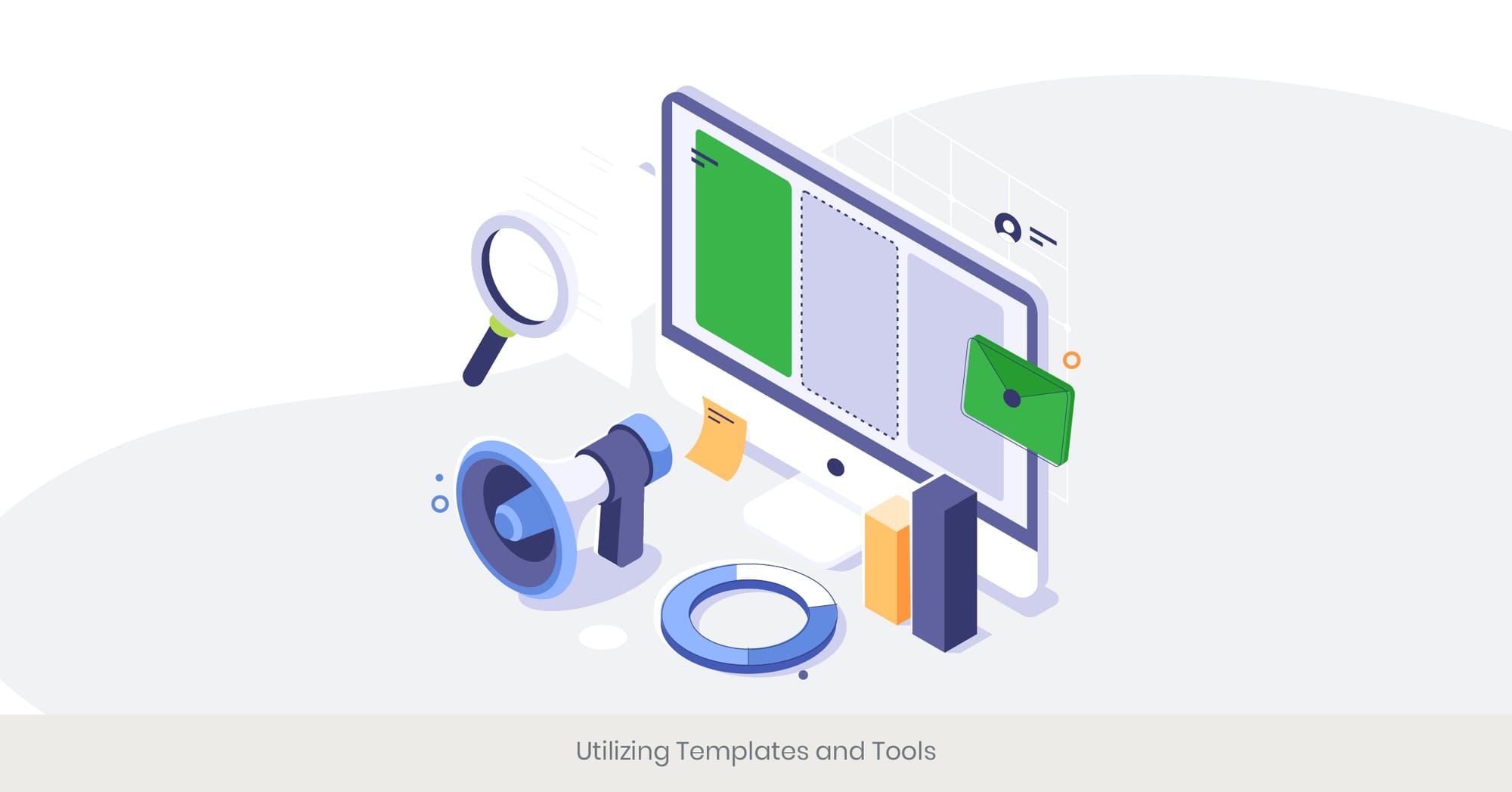

%20(1).jpg)
%20(1).jpg)
